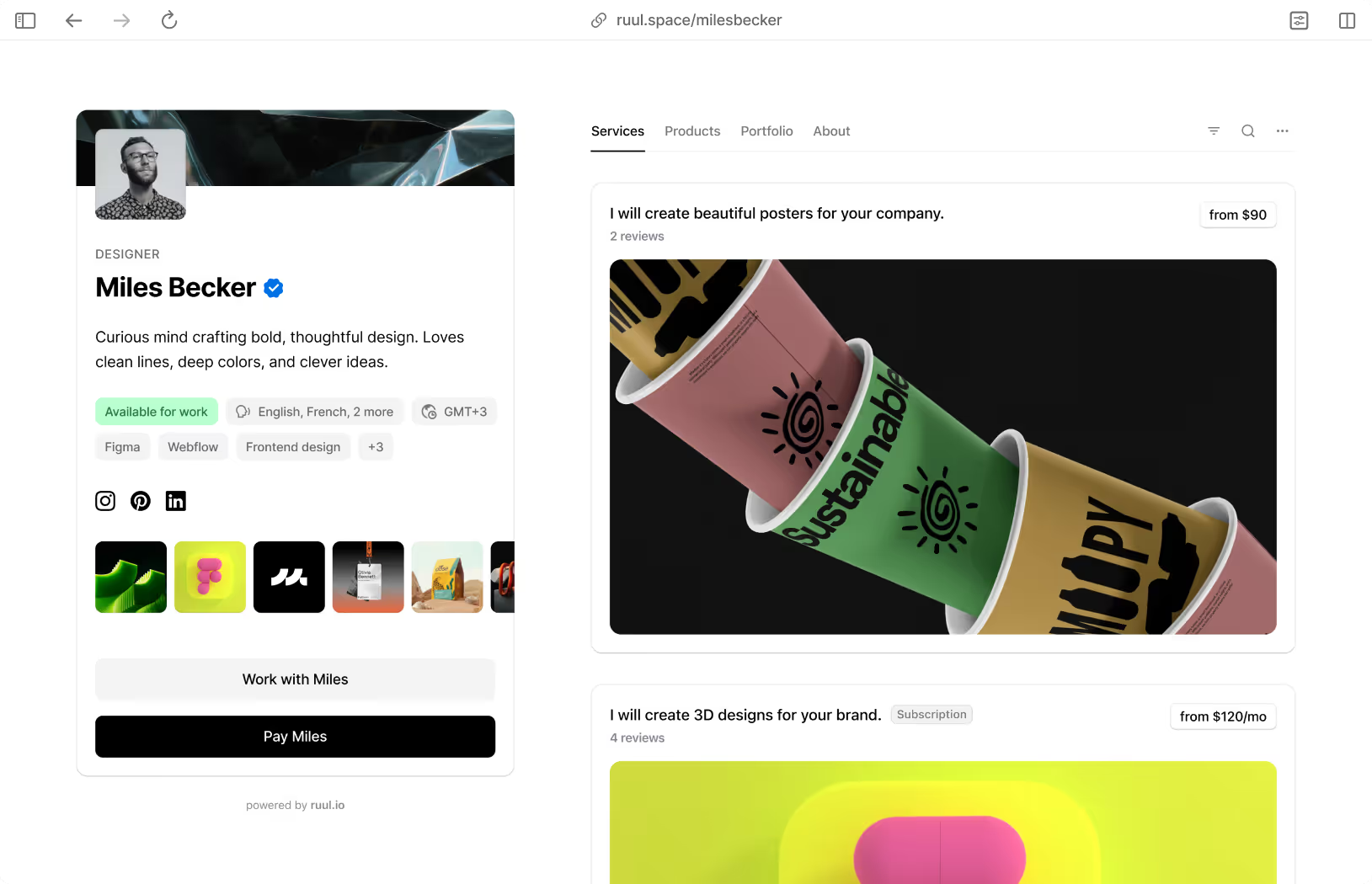Creating a freelance portfolio is one of the crucial steps that you have to take if you want to land work as an independent designer. A portfolio is often one of the first impressions that a potential client might have of you and your work. It advertises your style and creativity, the skills that you can use to execute a client’s vision, and the mediums you best work with.Freelance design portfolios have to introduce many aspects of you and your work in a relatively small space. It must attract a client’s interest and convince them that you are the right person for the job. This means you have to demonstrate your expertise and modes of expression through a limited number of examples.In this piece, we are going to discuss some qualities freelance design portfolios should have and give you tips on how to prepare a strong designer portfolio. Remember, freelancing portfolios are one of the most effective tools you have to entice customers, so you should invest time and effort to make your portfolio stand out from the competition. By following these tips, you’ll definitely have a good place to start.
What is a freelance design portfolio?
A freelance design portfolio is a self-employed portfolio showcasing a designer’s best work and exhibiting skills to prospective clients. In this regard, they don’t differ much from other freelancer portfolios such as those for content writers. However, some key aspects are very different.A freelance web designer’s portfolio, for example, emphasizes the visual aspects of the content like style, coordination, and UI design. A graphic designer might emphasize how their designs were related to or expressed a potential client’s brand. A design portfolio is the place where you show off what you can do, so make sure it’s both succinct and the best that you have.This means that you should invest considerable care to create the best possible gallery to display your work. Think of this as almost a mini-art gallery that shows viewers what they can expect from you when they hire you. It’s the best way to market yourself and your services.
Characteristics of a robust freelance designer portfolio
There are a million different ways that you can make an effective portfolio, and you’ll find just as many freelance portfolio examples, but they all have a few things in common. The key is crafting a portfolio evocative enough to leave a positive impression while being truthful to your skills. Some other tips include:
- Be sure to make your portfolio succinct and to the point; choose several high-quality examples of your work, but be careful not to overwhelm your viewer.
- Use designs that best illustrate your style and expertise; take big swings, and show off your best work to demonstrate what you’re capable of.
- Make sure your portfolio is easy to read and not cluttered; having a clean and accessible portfolio puts you miles ahead of potential competition.
- Make sure to include details of your projects like the brand, the task you accomplished, and if available some client feedback.
We will go into further details about other tips you can use, and even dive deeper into the ones mentioned above later in the article. But if we were to sum up these characteristics, we can say that good portfolios feature clean designs that show off your best work in a way that informs viewers about your style, capabilities, and your previous experiences. This is the goal you should aim for when putting your portfolio together.
How to build a designer portfolio in 6 steps
In this section, you’ll find a step-by-step guide to building an effective portfolio, including tips you need to make your work stand out. We’ll cover what you need to do, the best ways to do it, and why you should take this advice. In addition to reading the advice in this article, view some freelance designer portfolio samples by other designers so that you can have an idea about the direction you wish to take.
Be sure to curate your best work
This bit of advice seems like a no-brainer, but it bears repeating: show off the best work that you have. You want to put your best foot forward when making a first impression, and that’s what your portfolio is. You should be very selective with the examples that you wish to present and pick ones that you feel best represent your scope of experience, skills and abilities. This requires finding your earlier works that best fit these criteria, which isn’t necessarily easy.Pick the works that best demonstrate your creativity and skill in an accessible way. Use previous examples that have gotten good reviews from peers and colleagues, especially examples that have received positive client feedback. Your portfolio should represent the best you have to offer, and ensure that anyone who sees your work can’t help but take notice.
Add your unique style & personal touch
You most likely got into this line of work because you like expressing your creativity. You surely are incredibly passionate about creating and you have dedicated serious time and resources to do so. So, show it off. You want people to consider your portfolio as a unique experience that gives them a sense of who you are as a creator.Don’t shy away from leaning into your unique style, and be sure to make it one of the highlights of your portfolio. Find ways to illustrate this whether it be through the creative use of colors, texture, fonts, or even incorporating a little humor into your examples. You want prospective clients to know you and your work, so make sure you include enough of yourself in the examples you provide.
Emphasize your specialization
While focusing on ensuring that you represent yourself with your best work, you should also make sure that you’ve picked the projects that represent your specialization in the best way. If you are good at branding and making logos, then make sure that’s what you highlight in your portfolio. Think of it this way, you want clients to be impressed by your most marketable talent, so make sure you place that in the forefront.Oftentimes, designers will fall into a trap. You’ll see freelance portfolio examples where they include works or designs that they aren’t proficient in, in an attempt to showcase their versatility. While versatility is great, make sure that you are putting freelance work that you are completely comfortable and confident handling on your portfolio.
Limit your portfolio to 6 projects
We’ve emphasized finding the best work that you can display; not only do you want to lead with your best product but you also have a limited time to catch their attention. You don’t want to overwhelm the potential client with too many case studies or projects. Your mission should be to focus on quality over quantity. Prioritize a selection of examples and make sure that you have them presentable. You can find other ways to present your rather secondary projects. For example, if you create a ton of content, you can post them regularly on social media platforms like Instagram and have your account serve as a portfolio. Or, you can create a blog that features more of your work and even present insights into your creative processes. But make sure your portfolio still features your best selected works.
Use hero images to sell your skills
Before we discuss why you should use hero images, it’s important to quickly go over what the term hero image stands for. Hero images are large images that serve as a banner for websites and that catch the viewer's attention. Think of them almost as headlines. They are usually some of the first things that a potential viewer notices.So, you can imagine why hero images would be important. When creating a portfolio/website use fewer but larger and well-positioned images to catch the viewer’s eye. Don’t overwhelm your viewer with too many images, otherwise you risk cluttering your portfolio with needless graphics that are nothing but distractions.
Use clean layouts
In conjunction with the advice that we laid out above, another tip that you can use when making your portfolio is to ensure that you have a clean, well designed, and formatted portfolio page. Depending on your wants and needs, this can be a difficult process that might be tricky to master.
Bonus Tip: Choose the Right Platform
Choosing the best portfolio website builder can make or break your portfolio presentation. You can pick from the top, reasonably priced website builders for your online portfolio that are packed with advanced features, marketing and SEO tools to make it simple for you to share, sell, and promote your work without writing a single line of code. Check out these top portfolio websites to obtain ideas for how to make your website stand out and to be impactful.







.avif)


